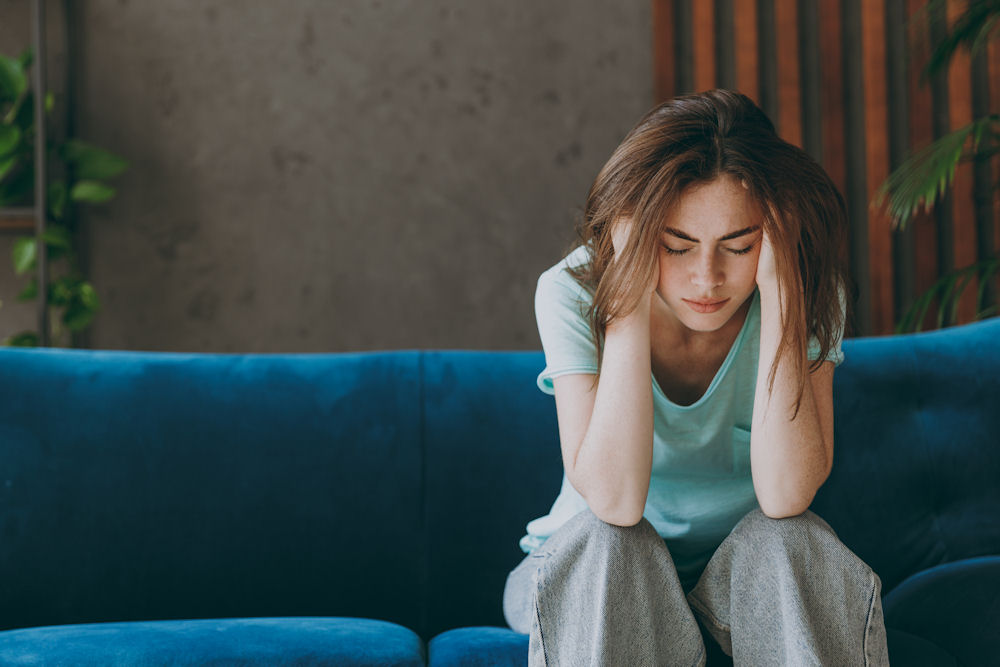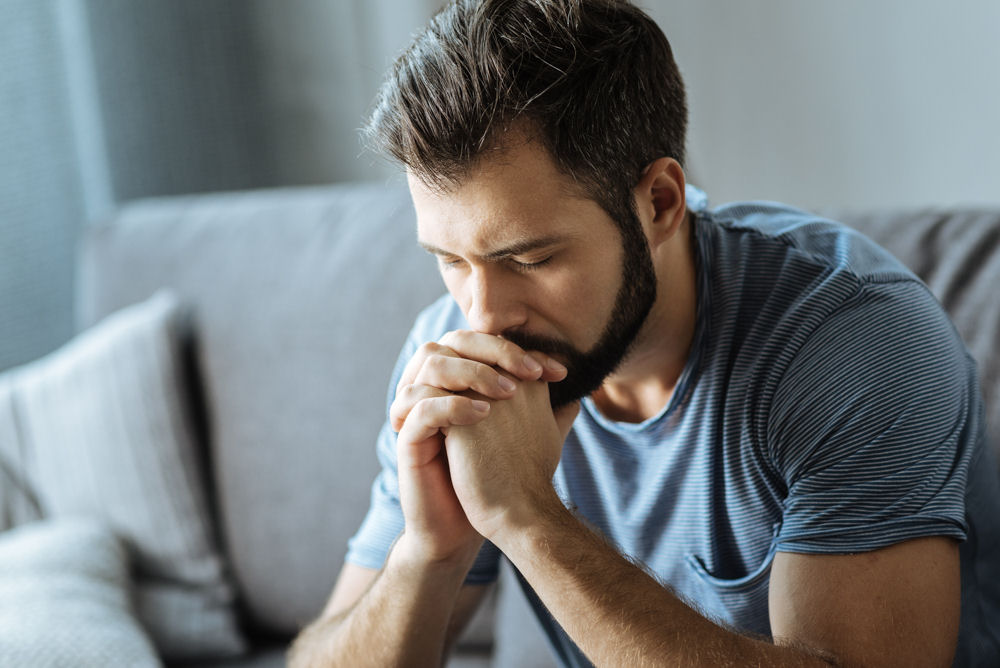Thousands of people search online each month looking for natural alternatives to treat their depressive disorder and anxiety. Kratom—a plant from Southeast Asia—has emerged as one of the most talked-about options, with users claiming it lifts their mood and calms their worries.
But does the science support these claims, and more importantly, is kratom safe? This article examines what kratom actually does to your brain, the research behind its use for mental health, and the safer alternatives that might work better for lasting recovery.
What Is Kratom And How Does It Affect Mood
The FDA hasn’t approved kratom as a treatment for depression or anxiety. Yet thousands of people use this plant in the hope that it will ease their symptoms. At Crestview Recovery, we’ve worked with many individuals who turned to kratom when traditional treatments felt out of reach or simply weren’t working.
Kratom comes from a tropical tree called Mitragyna speciosa that grows in Southeast Asia. For generations, people in Thailand, Malaysia, and Indonesia chewed the leaves or brewed them into tea to boost energy during long workdays. The leaves contain two main active compounds—mitragynine and 7-hydroxymitragynine—that attach to opioid receptors in your brain, similar to how prescription pain medications work.
When kratom’s compounds bind to these receptors, they trigger changes in brain chemicals like serotonin and dopamine. Both play major roles in regulating your mood and anxiety levels. Lower doses (around 1-5 grams) typically create stimulant-like effects—you might feel more alert, energized, and motivated. Higher doses (5-15 grams or more) tend to cause sedation and pain relief instead.
People who use kratom for mood concerns often report feeling:
- More energized: The fatigue that weighs you down starts to lift
- Less anxious: Worry and nervous thoughts quiet down
- Improved mood: A general sense of well-being or mild euphoria
- Pain relief: Physical discomfort decreases
This combination appeals to people dealing with depression, where low energy and anxiety often show up together. However, the effects vary wildly based on dose, strain, and individual body chemistry.
Is Kratom For Depression And Anxiety Backed By Research

The scientific research on kratom for depression and anxiety is surprisingly thin. Most studies rely on user surveys and animal research rather than controlled human trials. According to the National Institute on Drug Abuse, we’re still in the early stages of understanding how kratom affects mental health.
A 2021 survey in the journal Drug and Alcohol Dependence found that about 20% of kratom users take it primarily to manage depression. Yet self-reported surveys have major limitations—people often remember the good effects and downplay the bad ones. Without standardized dosing or consistent product quality, drawing firm conclusions becomes nearly impossible.
Animal studies show some potential. Research in mice suggests that mitragynine may have antidepressant-like effects by altering specific brain pathways. But mouse brains and human brains work differently. What helps a mouse in a lab doesn’t automatically translate to helping a person dealing with real depression.
The FDA hasn’t approved kratom for any medical use. The agency has issued multiple warnings about safety concerns, including contamination risks, potential for addiction, and a lack of quality control. Between 2021 and 2023, poison control centers received over 2,300 calls related to kratom, with symptoms ranging from nausea to seizures.
We’ve seen people who initially found relief using kratom for depression. Some felt better for weeks or months. Then tolerance built up, requiring higher doses to feel normal. Others developed dependence and faced worse depression when trying to quit.
Which Kratom Is Best For Anxiety And Depression
Kratom vendors market different “strains” with specific effects on mood and anxiety. However, these aren’t scientifically validated categories—they’re naming conventions based on leaf vein color or growing region. The actual chemical differences between strains remain largely unproven.
Maeng Da comes from Thailand and has a reputation for high potency. Users describe fast-acting effects including increased energy, elevated mood, and reduced anxiety. The stimulation can backfire, though—some people experience jitteriness or racing thoughts instead of calm. Effects typically last 3-5 hours before wearing off.
Bali kratom grows in Indonesia and leans toward calming effects. People report feeling relaxed and less anxious, with mild mood improvement that develops gradually. The sedating properties help some people with anxiety, but the same effects can worsen the fatigue that comes with depression. Effects generally last 4-6 hours.
Indo kratom also comes from Indonesia, but sits somewhere in the middle. Users describe gentle mood enhancement and moderate anxiety relief without intense stimulation or heavy sedation. This balanced approach appeals to people who want subtle effects, though some don’t notice any significant changes at all. The duration is about 3-4 hours.
Green Malay from Malaysia gets described as having balanced effects. Users report improved mood, a mild energy boost, and anxiety reduction without excessive stimulation. The effects last notably longer—often 5-8 hours—which makes it popular among people seeking sustained relief throughout their day.
Despite these reported differences, no scientific evidence supports the claim that strains have distinct chemical profiles or predictable effects. Growing conditions, harvesting methods, and processing create huge variability. Two products labeled as the same strain can produce completely different results.
Kratom Effects On Mental Health: Potential Benefits And Risks
The relationship between kratom and mental health cuts both ways. Some people report genuine relief, while others end up worse off than before.
People who find kratom helpful often describe mood elevation, reduced anxiety, increased energy to combat depression-related fatigue, and greater social confidence. These effects explain why kratom use has grown, particularly among people frustrated with traditional treatments.
Yet the risks are substantial. Short-term side effects include nausea, dizziness, constipation, dry mouth, and irritability. Some people experience what users call a “kratom hangover”—grogginess, headache, and mood disturbances the next day.
Long-term concerns run deeper. Regular kratom use can lead to physical dependence, where your body adapts and requires the substance to function normally. Withdrawal symptoms mirror opioid withdrawal:
- Muscle aches: Tension and pain throughout your body
- Sleep problems: Insomnia and restless nights
- Mood swings: Irritability and emotional instability
- Increased anxiety: Panic attacks and heightened worry
- Worsening depression: Symptoms more severe than before kratom use
Individuals who initially felt better using kratom only to discover their symptoms intensified after several months. The substance can interfere with your brain’s natural ability to regulate mood, creating a cycle where you need increasing amounts just to feel normal.
Kratom can also complicate existing mental health treatment. Mixing it with antidepressants or anti-anxiety medications creates unpredictable interactions. Some people develop serotonin syndrome—a dangerous condition from too much serotonin in the brain—when combining kratom with certain antidepressants.
Kratom Shots For Anxiety And Other Forms: Are They Safe
Kratom comes in several forms, each with different onset times, durations, and safety profiles. Kratom shots are concentrated liquid extracts sold in small bottles, marketed for convenience and rapid effects. These products carry greater risks than other forms.
Powder is the traditional form, in which dried leaves are ground to a fine powder. You mix it with water or juice, which allows flexible dosing but makes it taste bitter. Measuring accurate doses without a scale becomes tricky.
Capsules offer convenience and eliminate the taste issue. However, the delayed onset means people sometimes take more before the first dose kicks in, leading to accidental overdoses.
Shots and extracts are highly concentrated, making them the riskiest option. The rapid onset and high potency increase the chance of taking too much. Many shots contain additional ingredients like caffeine, which amplifies side effects and strains your heart.
The FDA has identified serious safety concerns across all kratom products. Testing has revealed contamination with heavy metals like lead, bacteria including Salmonella, and even other drugs. Because kratom gets sold as a dietary supplement rather than a medication, it faces no quality control or testing requirements like prescription drugs do.
There’s no standardization in the kratom industry. One vendor’s product might be twice as potent as another’s, making consistent dosing nearly impossible. This variability increases overdose risk and unpredictable effects.
What To Know About Dosage And Usage
No FDA-approved dosing guidelines exist for kratom because it’s not an approved medication. What circulates online are user-reported ranges that vary widely and come with significant risks.
Commonly reported doses range from 1-5 grams for mild, stimulating effects and 5-8 grams for stronger, more sedating effects. Your body weight, tolerance level, specific strain, and individual sensitivity all affect how kratom impacts you. Starting with the lowest possible dose matters because taking too much too quickly can cause severe nausea and dizziness.
Kratom interacts dangerously with many common medications. Combining it with antidepressants like SSRIs or SNRIs increases the risk of serotonin syndrome—a potentially life-threatening condition. Symptoms include confusion, rapid heart rate, high blood pressure, and muscle rigidity.
Anti-anxiety medications, particularly benzodiazepines, are especially dangerous when mixed with kratom. Both substances depress your central nervous system, and the combination can lead to severe respiratory depression or loss of consciousness.
Certain symptoms require immediate medical attention. Severe nausea or vomiting, chest pain, irregular heartbeat, confusion, hallucinations, or difficulty breathing after using kratom all warrant calling 911 immediately.
Red flags suggesting a developing problem include needing increasing amounts to achieve the same effects, experiencing withdrawal symptoms when trying to stop, worsening depression or anxiety despite continued use, and thoughts of self-harm. These signs indicate kratom is causing harm rather than helping.
Are There Safer Alternatives Or Professional Treatments

Evidence-based treatments for depression and anxiety have decades of research supporting their safety and effectiveness. FDA-approved medications like SSRIs (sertraline, escitalopram) and SNRIs (venlafaxine) work by adjusting brain chemistry in targeted, predictable ways. While they can cause side effects, healthcare providers can monitor and adjust treatment accordingly.
Therapy approaches offer powerful tools for managing depression and anxiety without substances. Cognitive Behavioral Therapy helps you identify and change thought patterns that contribute to mood problems. Dialectical Behavior Therapy teaches skills for managing intense emotions and improving relationships. Both approaches address root causes rather than just masking symptoms temporarily.
Lifestyle changes can significantly impact mental health, too. Regular exercise has been shown in numerous studies to reduce depression and anxiety symptoms. Quality sleep, balanced nutrition, and stress management techniques like meditation all support mental well-being.
At Crestview Recovery, we offer comprehensive, evidence-based care for depression and anxiety. Our treatment programs include medication management supervised by experienced psychiatrists, individual and group therapy using proven approaches, and holistic support addressing nutrition, exercise, and stress management. We create personalized care plans that address your unique situation and goals.
Professional treatment provides ongoing support and monitoring that self-medication with substances like kratom cannot match. When you work with our team, experienced clinicians can adjust your treatment as needed and help you develop sustainable coping strategies.
Our Commitment To Your Recovery
At Crestview Recovery, we’ve helped many individuals who turned to substances like kratom seeking relief from depression and anxiety. We understand that the decision to use kratom often comes from desperation—when traditional treatments haven’t worked or when the healthcare system feels inaccessible.
Our approach recognizes that effective treatment addresses both mental health and substance use together. Many people we work with have co-occurring disorders, meaning they’re dealing with both a mental health condition and substance dependence. We don’t judge—we provide compassionate, professional care that meets you where you are.
Our team includes experienced psychiatrists, therapists, and counselors who specialize in treating depression, anxiety, and substance use disorders. We offer both residential treatment and outpatient programs, so you can choose the level of care that best fits your needs. Throughout your time with us, you’ll develop coping skills, address underlying issues, and build a support network for lasting recovery.
Frequently Asked Questions About Kratom For Depression
Combining kratom with antidepressants creates serious risks, particularly serotonin syndrome. Kratom affects serotonin levels, and when combined with SSRIs or SNRIs, the interaction can cause dangerous spikes. Symptoms range from mild restlessness and confusion to life-threatening seizures and irregular heartbeat.
Kratom withdrawal mirrors opioid withdrawal and typically begins 12-24 hours after your last dose. Common symptoms include muscle aches, insomnia, irritability, mood swings, anxiety, a runny nose, and sweating. Symptoms usually peak around day 3-4 and gradually improve over 7-10 days, though psychological symptoms can persist longer.
The onset depends on the form you’re using. Kratom shots and powder mixed in beverages typically take effect within 10-30 minutes, with peak effects around 1-2 hours after consumption. Capsules take longer—usually 30-45 minutes to feel effects. Duration varies by dose and strain, generally lasting 3-6 hours.
Kratom’s legal status varies by location. Federally, kratom is legal in the United States, but the FDA has not approved it for any medical use. Several states have banned kratom entirely, including Alabama, Arkansas, Indiana, Rhode Island, Vermont, and Wisconsin. Some cities and counties have local bans even in states where it’s otherwise legal.
If you’re using kratom for depression, seeking professional evaluation is the safest step. A healthcare provider can assess both your mental health needs and any dependence that may have developed. Stopping kratom suddenly after regular use can cause uncomfortable withdrawal symptoms, so medical supervision during the transition is important.
If you or someone you care about is struggling with depression, anxiety, or substance use—including kratom—Crestview Recovery is here to help. Our compassionate team offers evidence-based treatment and personalized support to guide you toward lasting recovery. Contact Crestview Recovery today to learn more about our programs and take the first step toward a healthier future.
- National Institute on Drug Abuse. (2023). Kratom DrugFacts. https://nida.nih.gov/publications/drugfacts/kratom
- S. Food and Drug Administration. (2022). FDA and Kratom. https://www.fda.gov/news-events/public-health-focus/fda-and-kratom
































